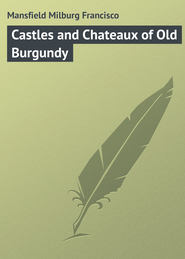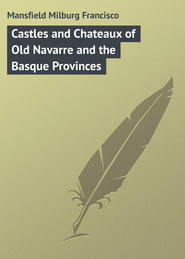По всем вопросам обращайтесь на: info@litportal.ru
(©) 2003-2024.
✖
The Automobilist Abroad
Настройки чтения
Размер шрифта
Высота строк
Поля
The above is for materials and labour on the roadways only, and something between 33 1/3 per cent, and 50 per cent. is added for the maintenance of watercourses and sidewalks, the planting of trees, and for general administrative expenses.
Excepting for twenty kilometres or so around Paris, the vehicular traffic on the country roads of France does not seem to be in any way excessive. The style of vehicles in France that carry into the cities farm and garden produce, wood, stone, etc., are large wagons with wheels six to seven feet in diameter. These wagons are more easily hauled and naturally do less damage to the roads than narrow-tired, low-wheeled trucks or drays. The horses in Paris, and in the country, are nearly all plain shod, with no heels or toes to act like a pick to break up the surface. Sometimes even one sees draught-horses with great flat, iron shoes extending out beyond the hoof in all directions.
The question of the speed of the automobile on the roads, in France and England, as indeed everywhere else, has been the moot point in all legislation that has been attempted.
The writer thinks the French custom the best. You may legally go at thirty kilometres an hour, and no more. If you exceed this you do it at your own risk. If an accident happens it may go hard with you, but if not, all is well, and you have the freedom of the road in all that the term implies. In the towns you are often held down to ten, eight, or even six kilometres an hour, but that is merely a local regulation, for your benefit as much as for the safety of the public, for many a French town has unthought-of possibilities of danger in its crooked streets and unsafe crossings.
Good roads have much to do with the pleasure of automobilism, and competent control and care of them will do much more. Where a picked bit of roadway has been chosen for automobile trials astonishing results have been obtained, as witness the Gordon-Bennett Cup records of the last six years, where the average speed per hour consistently increased from thirty-eight miles to nearly fifty-five, and this for long distances (three hundred and fifty miles or more).
To meet the new traffic conditions the authorities must widen the roads here and there, remove obstructions at corners, make encircling boulevards through narrowly laid out towns, and erect warning signs, like the following, a great deal more numerously than they have as yet.
They have very good automobile laws in France in spite of their anomalies. You agree to thirty-seven prescribed articles, and go through sundry formalities and take to the road with your automobile. In the name of the President of the Republic and the "peuple français," you are allowed thirty kilometres an hour in the open country, and twenty in the towns. You can do anything you like beyond this – at your own risk, and so long as no accident happens nothing will be said, but you must pull up when you come to a small town where M. le Maire, in the name of his forty-four electors, has decreed that his village is dangerously laid out for fast traffic, – and truth to tell it often is, – and accordingly you are limited to a modest ten or even less. It is annoying, of course, but if you are on a strange itinerary you had best go slow until you know what trouble lies ahead.
In theory la vitesse is national in France, but in practice it is communal, and the barriers rise, in the way of staring warnings posted at each village-end, like the barriers across the roads in the times of Louis XI.
Except in Holland, where some "private roads" still exist, and in certain parts of England, the toll-gate keeper has become almost an historical curiosity. It is true, however, that in England one does meet with annoying toll-bridges and gates, and in France one has equally annoying octroi barriers.
One recognizes the vested proprietary rights, many of which, in England, are hereditary, of certain toll-gates and bridges, but it is hard in these days, when franchises for the conduct of public services are only granted for limited periods, that legislation, born of popular clamour, should not confiscate, or, better, purchase at a fair valuation, these "rights," and make all roads and bridges free to all.
In France there are no toll-gates or bridges, or at least not many (the writer recalls but one, a bridge at La Roche-Guyou on the Seine, just above Vernon), but there are various state ferries across the Seine, the Rhône, the Saône, and the Loire, where a small charge is made for crossing. These are particularly useful on the lower Seine, in delightful Normandy, as there are no bridges below Rouen.
In France one's chief delays on the road are caused by the octroi barriers at all large towns, though only at Paris and, for a time, at St. Germain do they tax the supplies of essence (gasoline) and oil, which the automobilist carries in his tanks.
The octroi taxes are onerous enough in all conscience, but it is a pity to annoy automobilists in the way the authorities do at the gates of Paris, and it's still worse for a touring automobile to be stopped at the barrier of a town like Evreux in Normandy, or Tarare in the Beaujolais. Whatever does the humble (and civil, too) guardian do it for, except to show his authority, and smile pleasantly, as he waves you off after having brought you to a full stop at the bottom of a twisting cobble-stoned, hilly street where you need all the energy and suppleness of your motor in order to reach the top.
There are not many of these abrupt stops, outside the large towns, and nowhere do they tax you on your oil or essence except at Paris – where you pay (alas!) nearly as much as the original cost.
At Rouen the guardian comes up, looks in your tonneau to see if you have a fish or a partridge hidden away, and sends you on your way with a bored look, as though he disliked the business as much as you do. At Tours, if you come to the barrier just as the official has finished a good lunch, he simply smiles, and doesn't even stop you. At Marseilles you get up from your seat and let the official poke a bamboo stick down among your chambres d'air, and say nothing – provided he does not puncture them; if he does, you say a good deal, but he replies by saying that he was merely doing his duty, and meant no harm.
At Nantes, at Rennes, at Orleans, and Bordeaux, all of them grandes villes, every one is civil and apologetic, but still the procedure goes on just the same.
At Lyons the octroi tax has been abolished. Real progress this!
In the old coaching days road speeds fell far behind what they are to-day in a well-constructed and capable automobile, but, as they put in long hours on the road, they certainly did get over the ground in a fairly satisfactory manner. Private conveyances, with private horses, could not hope to accomplish anything like it, simply because there is a limit to the working powers and hours of the individual horse. With the old mail-coaches, in England, and the malle-poste and the poste-chaise, in France, things were different, for at every poste, or section, was a new relay; and on the coach went at the same pace as before.
The London-Birmingham coaches in 1830 covered the 109 miles between the two points at an average speed of 15.13 miles per hour, the highest speed being eighteen, and the lowest eleven miles.
In France the speeds were a little better. From Lyons the old mail-coaches used to make the journey to Paris in four days by way of Auxerre, and in five by Moulins, though the distance is the same, one hundred and twenty leagues. To-day the automobile, which fears not hills, take invariably the Moulins road, and covers the distance between breakfast and dinner; that is, if the driver is a "scorcher;" and there are such in France.
In 1834 there were thirteen great lines of malle-postes in France as follows:
To Calais. By Clermont, Amiens, and Abbeville.
To Lille. By Senlis, Noyon, St. Quentin, Cambrai, and Douai.
To Mezières. By Soissons, Reims, and Rhetel.
To Strasbourg. By Chalons-sur-Marne, Metz, and Sarrebourg.
To Besançon. By Troyes and Dijon.
To Lyon. By Melun, Auxerre, Autun, and Macon.
To Clermont-Ferrand. By Fontainebleau, Briare, Nevers, and Moulins.
To Toulouse. By Orleans, Chateauroux, Limoges, and Cahors.
To Bordeaux. By Orleans, Blois, Tours, Poitiers, and Angoulême.
To Nantes. By Chartres, Le Mans, La Fleche, and Angers.
To Brest. By Alençon, Laval, Rennes, and St. Brieuc.
To Caen. By Bonnières, Evreux, and Lisieux.
To Rouen. By Neuilly-sur-Seine, Pontoise, Gisors, Ecouis, and Fleury-sur-Andelle.
Besides the malle-poste there was another organization in France even more rapid. The following is copied from an old advertisement:
AVIS AU PUBLIC
"Messageries Royales – Nouvelles Diligences
"Le Public est averti:
"Il partira de Paris toutes les semaines, pour Dunkerque, passant par Senlis, Compiègne, et Noyon, une diligence le lundi à 6 heures du matin. Elle repartira de Dunkerque à Paris, le mercredi à 6 heures du matin. Il partira aussi dans chaque sens une voiture pour les gros bagages et objets fragiles, le jeudi de chaque semaine.
"Les bureaux de ces diligences sont établis à Paris, rue St. Denis, vis-à-vis les Filles-Dieu."
From Paris to Bordeaux, 157 leagues, the Messageries Royales made the going at an easy pace in five days. To-day the express-trains do it in six and one-half hours, and the ever-ready automobile has knocked a half an hour off that, just for a record. "Tempus fugit."
The subject of roads and roadmaking is one that to-day more than ever is a matter of deep concern to those responsible for a nation's welfare.
It might seem, in these progressive days, that it was in reality a matter which might take care of itself, at least so far as originally well-planned or well-built roads were concerned. This, however, is not the case; the railway has very nearly reached the limit of its efficiency (at any rate in thickly settled parts), and the electric roads have merely stepped in and completed its functions.
It is certain that an improved system of road administration or control is needed. The turnpike or the highroad served its purpose well enough in coaching days as the most direct and quickest way between important towns. To-day, in many respects, conditions are changed. Certain centres of population and commercial activity have progressed at the expense of less fortunate communities, and the one-time direct highroads now deviate considerably, with the result that there is often an unnecessary prolongation of distance and expenditure of time.
Examples of this sort are to be found all over Britain, but a great deal less frequently in France, where the communication is by a more direct line between important centres, often leaving the small and unimportant towns out of the itinerary altogether.
In England, centralization or nationalization of the road-building authority should remedy all this. Cuts and deviations from existing lines, for the general good, would then be made without local jealousy or misapplied influence being brought to bear, and the general details of width and surface be carried on throughout the land, under one supreme power, and not, as often now is the case, by various local district and urban councils and county surveyors.
"The Great North Road" and "The Famous Bath Road" vary greatly throughout their length as to width and excellence; and yet popular opinion in the south of England would seem to indicate that these roads, to single them out from among others, are idyllic, both in character of surface and skill of engineering, throughout their length. This is manifestly not so. The "Bath Road," for example, in parts, is as flat and well-formed a surface as one could hope to find, even in France itself, but at times it degenerates into a mere narrow, guttery alley, especially in its passage through some of the Thames-side towns, where the surface is never of that excellence that it should be; throughout its entire length of some hundred odd miles to Bath there are ever-recurring evidence of bad road-making and worse engineering.
One is bound to take into consideration that it is the automobile, and the general increase in automobile traffic, that, in all countries, is causing the wide-spread demand for improved roads.
To illustrate the growth of the use of the automobile on the public highway, and taking France as an example, the following statistics are given from the Journal des Débats:
In 1900 there were taxed in France 1,399 voitures-automobiles of more than two places, and 955 of one or two places. In 1903 the figures had risen to 7,228 and 2,694 respectively. These figures may seem astonishingly small at first glance, but their percentage of growth is certainly abnormally large. These voitures-automobiles, be it recalled, are all pleasure carriages, and displaced in the same time (according to the same authority) 10,000 horse-drawn vehicles. At the same period Paris alone claimed 1,845 voitures-automobiles and 6,539 horse-drawn pleasure carriages.
Excepting for twenty kilometres or so around Paris, the vehicular traffic on the country roads of France does not seem to be in any way excessive. The style of vehicles in France that carry into the cities farm and garden produce, wood, stone, etc., are large wagons with wheels six to seven feet in diameter. These wagons are more easily hauled and naturally do less damage to the roads than narrow-tired, low-wheeled trucks or drays. The horses in Paris, and in the country, are nearly all plain shod, with no heels or toes to act like a pick to break up the surface. Sometimes even one sees draught-horses with great flat, iron shoes extending out beyond the hoof in all directions.
The question of the speed of the automobile on the roads, in France and England, as indeed everywhere else, has been the moot point in all legislation that has been attempted.
The writer thinks the French custom the best. You may legally go at thirty kilometres an hour, and no more. If you exceed this you do it at your own risk. If an accident happens it may go hard with you, but if not, all is well, and you have the freedom of the road in all that the term implies. In the towns you are often held down to ten, eight, or even six kilometres an hour, but that is merely a local regulation, for your benefit as much as for the safety of the public, for many a French town has unthought-of possibilities of danger in its crooked streets and unsafe crossings.
Good roads have much to do with the pleasure of automobilism, and competent control and care of them will do much more. Where a picked bit of roadway has been chosen for automobile trials astonishing results have been obtained, as witness the Gordon-Bennett Cup records of the last six years, where the average speed per hour consistently increased from thirty-eight miles to nearly fifty-five, and this for long distances (three hundred and fifty miles or more).
To meet the new traffic conditions the authorities must widen the roads here and there, remove obstructions at corners, make encircling boulevards through narrowly laid out towns, and erect warning signs, like the following, a great deal more numerously than they have as yet.
They have very good automobile laws in France in spite of their anomalies. You agree to thirty-seven prescribed articles, and go through sundry formalities and take to the road with your automobile. In the name of the President of the Republic and the "peuple français," you are allowed thirty kilometres an hour in the open country, and twenty in the towns. You can do anything you like beyond this – at your own risk, and so long as no accident happens nothing will be said, but you must pull up when you come to a small town where M. le Maire, in the name of his forty-four electors, has decreed that his village is dangerously laid out for fast traffic, – and truth to tell it often is, – and accordingly you are limited to a modest ten or even less. It is annoying, of course, but if you are on a strange itinerary you had best go slow until you know what trouble lies ahead.
In theory la vitesse is national in France, but in practice it is communal, and the barriers rise, in the way of staring warnings posted at each village-end, like the barriers across the roads in the times of Louis XI.
Except in Holland, where some "private roads" still exist, and in certain parts of England, the toll-gate keeper has become almost an historical curiosity. It is true, however, that in England one does meet with annoying toll-bridges and gates, and in France one has equally annoying octroi barriers.
One recognizes the vested proprietary rights, many of which, in England, are hereditary, of certain toll-gates and bridges, but it is hard in these days, when franchises for the conduct of public services are only granted for limited periods, that legislation, born of popular clamour, should not confiscate, or, better, purchase at a fair valuation, these "rights," and make all roads and bridges free to all.
In France there are no toll-gates or bridges, or at least not many (the writer recalls but one, a bridge at La Roche-Guyou on the Seine, just above Vernon), but there are various state ferries across the Seine, the Rhône, the Saône, and the Loire, where a small charge is made for crossing. These are particularly useful on the lower Seine, in delightful Normandy, as there are no bridges below Rouen.
In France one's chief delays on the road are caused by the octroi barriers at all large towns, though only at Paris and, for a time, at St. Germain do they tax the supplies of essence (gasoline) and oil, which the automobilist carries in his tanks.
The octroi taxes are onerous enough in all conscience, but it is a pity to annoy automobilists in the way the authorities do at the gates of Paris, and it's still worse for a touring automobile to be stopped at the barrier of a town like Evreux in Normandy, or Tarare in the Beaujolais. Whatever does the humble (and civil, too) guardian do it for, except to show his authority, and smile pleasantly, as he waves you off after having brought you to a full stop at the bottom of a twisting cobble-stoned, hilly street where you need all the energy and suppleness of your motor in order to reach the top.
There are not many of these abrupt stops, outside the large towns, and nowhere do they tax you on your oil or essence except at Paris – where you pay (alas!) nearly as much as the original cost.
At Rouen the guardian comes up, looks in your tonneau to see if you have a fish or a partridge hidden away, and sends you on your way with a bored look, as though he disliked the business as much as you do. At Tours, if you come to the barrier just as the official has finished a good lunch, he simply smiles, and doesn't even stop you. At Marseilles you get up from your seat and let the official poke a bamboo stick down among your chambres d'air, and say nothing – provided he does not puncture them; if he does, you say a good deal, but he replies by saying that he was merely doing his duty, and meant no harm.
At Nantes, at Rennes, at Orleans, and Bordeaux, all of them grandes villes, every one is civil and apologetic, but still the procedure goes on just the same.
At Lyons the octroi tax has been abolished. Real progress this!
In the old coaching days road speeds fell far behind what they are to-day in a well-constructed and capable automobile, but, as they put in long hours on the road, they certainly did get over the ground in a fairly satisfactory manner. Private conveyances, with private horses, could not hope to accomplish anything like it, simply because there is a limit to the working powers and hours of the individual horse. With the old mail-coaches, in England, and the malle-poste and the poste-chaise, in France, things were different, for at every poste, or section, was a new relay; and on the coach went at the same pace as before.
The London-Birmingham coaches in 1830 covered the 109 miles between the two points at an average speed of 15.13 miles per hour, the highest speed being eighteen, and the lowest eleven miles.
In France the speeds were a little better. From Lyons the old mail-coaches used to make the journey to Paris in four days by way of Auxerre, and in five by Moulins, though the distance is the same, one hundred and twenty leagues. To-day the automobile, which fears not hills, take invariably the Moulins road, and covers the distance between breakfast and dinner; that is, if the driver is a "scorcher;" and there are such in France.
In 1834 there were thirteen great lines of malle-postes in France as follows:
To Calais. By Clermont, Amiens, and Abbeville.
To Lille. By Senlis, Noyon, St. Quentin, Cambrai, and Douai.
To Mezières. By Soissons, Reims, and Rhetel.
To Strasbourg. By Chalons-sur-Marne, Metz, and Sarrebourg.
To Besançon. By Troyes and Dijon.
To Lyon. By Melun, Auxerre, Autun, and Macon.
To Clermont-Ferrand. By Fontainebleau, Briare, Nevers, and Moulins.
To Toulouse. By Orleans, Chateauroux, Limoges, and Cahors.
To Bordeaux. By Orleans, Blois, Tours, Poitiers, and Angoulême.
To Nantes. By Chartres, Le Mans, La Fleche, and Angers.
To Brest. By Alençon, Laval, Rennes, and St. Brieuc.
To Caen. By Bonnières, Evreux, and Lisieux.
To Rouen. By Neuilly-sur-Seine, Pontoise, Gisors, Ecouis, and Fleury-sur-Andelle.
Besides the malle-poste there was another organization in France even more rapid. The following is copied from an old advertisement:
AVIS AU PUBLIC
"Messageries Royales – Nouvelles Diligences
"Le Public est averti:
"Il partira de Paris toutes les semaines, pour Dunkerque, passant par Senlis, Compiègne, et Noyon, une diligence le lundi à 6 heures du matin. Elle repartira de Dunkerque à Paris, le mercredi à 6 heures du matin. Il partira aussi dans chaque sens une voiture pour les gros bagages et objets fragiles, le jeudi de chaque semaine.
"Les bureaux de ces diligences sont établis à Paris, rue St. Denis, vis-à-vis les Filles-Dieu."
From Paris to Bordeaux, 157 leagues, the Messageries Royales made the going at an easy pace in five days. To-day the express-trains do it in six and one-half hours, and the ever-ready automobile has knocked a half an hour off that, just for a record. "Tempus fugit."
The subject of roads and roadmaking is one that to-day more than ever is a matter of deep concern to those responsible for a nation's welfare.
It might seem, in these progressive days, that it was in reality a matter which might take care of itself, at least so far as originally well-planned or well-built roads were concerned. This, however, is not the case; the railway has very nearly reached the limit of its efficiency (at any rate in thickly settled parts), and the electric roads have merely stepped in and completed its functions.
It is certain that an improved system of road administration or control is needed. The turnpike or the highroad served its purpose well enough in coaching days as the most direct and quickest way between important towns. To-day, in many respects, conditions are changed. Certain centres of population and commercial activity have progressed at the expense of less fortunate communities, and the one-time direct highroads now deviate considerably, with the result that there is often an unnecessary prolongation of distance and expenditure of time.
Examples of this sort are to be found all over Britain, but a great deal less frequently in France, where the communication is by a more direct line between important centres, often leaving the small and unimportant towns out of the itinerary altogether.
In England, centralization or nationalization of the road-building authority should remedy all this. Cuts and deviations from existing lines, for the general good, would then be made without local jealousy or misapplied influence being brought to bear, and the general details of width and surface be carried on throughout the land, under one supreme power, and not, as often now is the case, by various local district and urban councils and county surveyors.
"The Great North Road" and "The Famous Bath Road" vary greatly throughout their length as to width and excellence; and yet popular opinion in the south of England would seem to indicate that these roads, to single them out from among others, are idyllic, both in character of surface and skill of engineering, throughout their length. This is manifestly not so. The "Bath Road," for example, in parts, is as flat and well-formed a surface as one could hope to find, even in France itself, but at times it degenerates into a mere narrow, guttery alley, especially in its passage through some of the Thames-side towns, where the surface is never of that excellence that it should be; throughout its entire length of some hundred odd miles to Bath there are ever-recurring evidence of bad road-making and worse engineering.
One is bound to take into consideration that it is the automobile, and the general increase in automobile traffic, that, in all countries, is causing the wide-spread demand for improved roads.
To illustrate the growth of the use of the automobile on the public highway, and taking France as an example, the following statistics are given from the Journal des Débats:
In 1900 there were taxed in France 1,399 voitures-automobiles of more than two places, and 955 of one or two places. In 1903 the figures had risen to 7,228 and 2,694 respectively. These figures may seem astonishingly small at first glance, but their percentage of growth is certainly abnormally large. These voitures-automobiles, be it recalled, are all pleasure carriages, and displaced in the same time (according to the same authority) 10,000 horse-drawn vehicles. At the same period Paris alone claimed 1,845 voitures-automobiles and 6,539 horse-drawn pleasure carriages.











